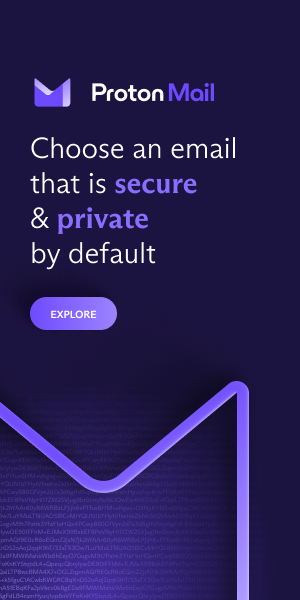Welcome to our exclusive Rating Guide for AI Agents, a transparent, independent framework built to assess privacy, data control, and sovereignty in the new era of artificial intelligence.
This guide reveals the exact methodology and criteria used for every evaluation published on our site. It is the backbone of our rankings and aims to empower users, developers, and projects to better understand how each AI Agent is measured, beyond marketing and hype.
Updated regularly, this guide evolves with technological innovation and community feedback, ensuring that our standards remain relevant in a rapidly changing digital world.
Our ambition: set a new standard for clarity, fairness, and transparency in the AI space.
update : 25/08/04 16:15 UTC
Data Collection
Stored prompts
- A (20): Not stored or anonymized, rapid deletion (<24h), no exploitation, clear and verifiable policy.
- B (15): Temporary limited storage (24-48h), partial encryption, usage restricted to service, clear consent.
- C (5): Clear storage, basic protections, possible use for training without clear opt-out, poorly detailed policy.
- D (0): Clear storage without control, opaque/commercial exploitation, deletion impossible, policy absent.
Use for training
- A (20): Prompts not used or only with reliable anonymization (depersonalized/aggregated data).
- B (15): Partial use with imperfect or limited anonymization, partial documentation.
- C (5): Full use of raw prompts, little or no user control, difficult opt-out.
- D (0): Opaque, extensive use without consent, possible undisclosed commercial use.
Account required
- A (20): Access possible without account, guaranteed anonymous use, no personal data collected.
- B (15): Account required without sensitive data collection, limited personal data, simple opt-out.
- C (5): Account mandatory with limited collection but no anonymous option, standard personal data.
- D (0): Account mandatory with collection of sensitive data, mandatory use, no transparency.
Data retention duration
- A (20): Very short retention (<24-48h), clearly stated and strictly respected.
- B (15): Medium retention (up to 7 days) or stated with vague limits.
- C (5): Long retention (>7 days), vague or poorly respected policy.
- D (0): Indefinite retention, not specified, or absent policy.
User Control
Deletion possible
- A (20): Complete, immediate deletion, simple self-service via intuitive interface, no delay or hidden conditions.
- B (15): Partial deletion or requiring support request, reasonable delay (<7 days); documented but not fully automated procedure.
- C (5): Difficult, slow deletion (>7 days), limited to some data types or conditions, opaque procedure.
- D (0): Deletion impossible, not offered or very restrictive conditions preventing erasure rights.
Export possible
- A (20): Complete export, open standard formats (CSV, JSON…), freely accessible via interface or API, no limit or restriction.
- B (15): Partial export (limited data or proprietary formats), accessible but with constraints (e.g. limited exports, manual request).
- C (5): Very limited export, non-standard formats, export only via support or partially available.
- D (0): Export impossible or unsupported.
Granularity settings
- A (20): Detailed multi-level settings, allowing users to precisely choose which data is collected, stored, shared, with a clear interface.
- B (15): Basic settings, limited choices (e.g. on/off), but present and usable.
- C (5): Very limited settings, poorly accessible or documented, partial or hidden options.
- D (0): No possible settings, rigid data collection without user intervention.
Explicit user consent
- A (20): Clear, specific, explicit consent, GDPR compliant, easy to retract without impact on basic use.
- B (15): Consent present but confusingly worded, interface not intuitive for management/withdrawal.
- C (5): Implicit consent, default, hard to withdraw, partial information on processing.
- D (0): Consent absent, forced or hidden, total lack of information.
Transparency
Clear policy
- A (20): Complete, accessible policy, clear language, details all data processing, regularly updated.
- B (15): Policy present but marketing language, vague on some points, infrequent updates.
- C (5): Unclear, hard to understand policy, missing key info or contradictory.
- D (0): Policy absent, very hard to find or completely opaque.
Change notification
- A (20): Proactive and advance notification (email, UI), detailed, allowing user to act before changes.
- B (15): Discreet notification, sometimes only visible after update, not always clear.
- C (5): Late notification, hard to detect, no clear summary of changes.
- D (0): No notification provided.
Model documentation
- A (20): Complete technical documentation (architecture, data, security), accessible, regularly updated.
- B (15): Partial, limited technical documentation.
- C (5): Basic documentation, marketing or consumer-oriented only.
- D (0): Documentation absent or inaccessible.
Privacy by Design
Encryption (core & advanced)
- A (20): End-to-end, homomorphic encryption, TEE, or MPC; strong encryption both in transit and at rest; plus public audits or certifications available.
- B (15): Strong encryption (in transit and at rest), some advanced features, but lacking full public audit or only partially implemented.
- C (5): Only basic encryption (standard HTTPS/TLS, basic at rest), with no advanced features or public documentation.
- D (0): No effective encryption, or outdated/weak methods.
Privacy-Enhancing Technologies
- A (20): Advanced privacy tech (differential privacy, federated learning, strong anonymization, data minimization) are fully implemented, with proof through documentation or audits.
- B (15): Some privacy technologies present, but coverage is limited or only applied to part of the system.
- C (5): Privacy tech is only mentioned, experimental, or not clearly deployed in real-world use.
- D (0): No meaningful privacy technologies implemented.
Auditability & Certification
- A (20): Regular third-party audits with public results, plus at least one recognized certification (ISO 27001, SOC2, etc.) verifiable online.
- B (15): Audits are regular but internal or not fully public, or certifications are claimed but not verifiable.
- C (5): Only occasional, incomplete, or internal audits, and results are not public.
- D (0): No audits, no certifications, no external review.
Transparency & Technical Documentation
- A (20): Detailed, up-to-date public documentation covering all privacy and technical measures (architecture, encryption, PETs, access, logs, etc.).
- B (15): Documentation is partial, only covers some aspects, or is not always updated.
- C (5): Only high-level, superficial, or marketing-focused documentation available.
- D (0): No technical or privacy documentation accessible.
User-Configurable Privacy Features
- A (20): Users can adjust privacy settings in detail (enable/disable features, set encryption levels, manage anonymization) through a clear self-service interface.
- B (15): Some user privacy controls are available, but with limited options or usability.
- C (5): Only basic or global privacy control (single opt-in/out), little flexibility.
- D (0): No user control over privacy settings.
Hosting & Sovereignty
Sovereignty
- A (20): Hosted in recognized sovereign jurisdiction (e.g. EU, France, Switzerland) AND offers full self-hosting.
- B (15): Hosted in recognized sovereign jurisdiction but no self-hosting option (cloud only).
- C (5) : Partially hosted in sovereign jurisdiction (multi-cloud, mixed), no self-hosting.
- D (0): Hosted in non-sovereign jurisdiction (e.g. USA, China), no self-hosting.
Legal jurisdiction
- A (20): Hosting under strong data protection jurisdiction (EU, Switzerland, Norway).
- B (15): Hosting in jurisdiction with moderate protection (Canada, Japan, Australia).
- C (5): Weak or poorly applied privacy laws (some Latin American, African, Asian countries).
- D (0): Undefined, lax or intrusive jurisdiction, no effective protection (e.g. USA without specific guarantees).
Local option
- A (20): Model can run locally or be self-hosted, guaranteeing full data sovereignty.
- B (15): Partial localizability (roadmap or enterprise version).
- C (5): No local support, but limited hybrid solutions (local proxy, sandbox).
- D (0): 100% cloud, no local or self-hosting possible.
Big Tech dependence
- A (20): No dependence on Big Tech services/infrastructure (Google, Amazon, MS, Meta). Autonomous or sovereign solution.
- B (15): Partial dependence with possible alternatives or workarounds.
- C (5): Strong partial dependence (major cloud hosting, critical APIs), but not total.
- D (0): Complete strong dependence, no alternative or sovereignty.
Open Source
Publicly available model
- A (20): Full open source model, code and training data accessible.
- B (15): Partially open source model (e.g. model but no data).
- C (5): Closed model but some components or API public.
- D (0): Fully proprietary model.
Clear open source license
- A (20): Permissive license (MIT, Apache 2.0), clear and well documented.
- B (15): Restrictive or partly ambiguous but recognized license.
- C (5): Unclear, ambiguous or non-standard license.
- D (0): No license or proprietary.
Inference code available
- A (20): Complete accessible, maintained and documented inference code.
- B (15): Partially accessible or outdated code.
- C (5): Closed code, API access only.
- D (0): Closed and inaccessible code.
Remarks
Free text, observations, roadmap, incidents. (no score)
For each sub-criterion, select the highest score matching the actual state. The final score is the sum of all items divided by the maximum possible, giving a rating out of 100.
This guide is for informational purposes only and reflects the methodology and analysis model developed by Future of internet. While we strive for accuracy and neutrality, interpretations remain subjective. For any questions or disputes, contact futurofintenet@proton.me





